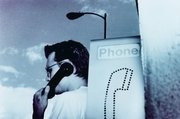Anton Corbijn
dal 28/4/2009 al 4/7/2009
Segnalato da
28/4/2009
Anton Corbijn
Ludwig Museum, Budapest
Work

Anton Corbijn’s retrospective offers an overview of the Dutch photographer's oeuvre, spanning thirty years from the early video clips to the recent portraits. Corbijn has experimented in wide-ranging areas of modern visual culture. This exhibition features short films and video clips, as well as designs for concert sets, book covers, and record sleeves. Photography, though, has always been his primary means of expression.
Corbijn was born in 1955 in Strijen on a Dutch island, whose cultural isolation was responsible for the intensity with which his desire to be near the music world was formed. Contemporary rock music was what steered Anton Corbijn towards photography. To legitimize his presence at the concerts and to compensate for his shyness, he took his father’s camera with him, which excused him to get close to the musicians. The camera was a communicative prosthesis, which helped him overcome his social timidity, lending him confidence in an alien environment.
His father was a pastor, and Protestantism, together with the contemplative outlook that marked the inhabitants of Strijen, was to have a distinctive influence on the way Corbijn recorded visual experiences.
By choosing black-and-white photography as his absolute reference point, Corbijn went against the prevailing custom of music photos of the mid 70’s – very colourful, unnaturally clear and sharp, artificially lighted and almost polished to a sheen – as well as the unceasing flow of images they provoke, their loud visual noise. His first book published in 1989 and entitled FAMOUZ shows exclusively black-and-white works from 1976 to 1988, in which his vision is informed by the visual legacy of W. Eugene Smith, Robert Frank or Dorothea Lange.
The style of his photos is distinguished by grainy development, and a sense of corporeal proximity, blurred, soft contours, features lost in shadows, eyes covered or averted, and an emphasis on hands, all within surprising, unusual compositions. Corbijn does not simply fight the transience of reality, but also wants to make sure we know that what we see in the pictures is not ideals, but idols who resemble their own shadows. This way he places his often famous models on the border between mystification and anonymity, which makes these self-perpetuating myths questionable and unstable.
In his work Corbijn also studies different social and psychological phenomena related to the concept of the star. In the early black-and-white photos, as well as in the Star Trak series, he questions stardom as a lifestyle or a psychological state. In his pictures we encounter well-known people whose personality has been burnt into the public consciousness thanks to their constant presence in the media. Their spontaneous, deeply human self-revelation in Corbijn’s photos and the disclosure of their non-public, real personality is a disturbing sight, verging on a lie.
Identifying with stars (or rather idols) has come to be one of the most interesting and unique issues of social psychology in the past fifty years. The Dutch artist is so interested in the question of stars’ identities that upon returning to Strijen he submitted himself to the same analysis, in a series he entitled a. somebody, in which his creative approach undeniable parallels with the works of Cindy Sherman. In a process aiming at self-knowledge, he took on the appearance of late musicians, referring both to his own obsession with some musicians as a young man and the obsession with the Christian values of his parents with their focus on life after death. With 33 Still Lives, a subtle critique of the tabloid-induced popular demand for images from celebrities’ private lives, Corbijn also examines the paparazzi phenomenon, and the shallowness, emptiness and thoughtlessness of star shots. He takes up the fight with the inhuman, mechanical production of images and their resulting dominance. The color is dictated by the resemblance of old movie posters in forgotten cinemas whose colors have been drained by the sunlight. These photos are like filmstills of imaginary movies.
Of the great many bands with whom Anton Corbijn has worked (including U2, Nirvana, and Coldplay), we dedicate a separate room to portraits of Depeche Mode members, because they have had 23 year long and firm professional and personal relationship with the photographer, something that has proved mutually inspiring for the artists, and a stimulus for renewal.
A milestone in Corbijn’s career, his feature on Joy Division's vocalist Ian Curtis premiered in 2007. Control, which has earned much critical acclaim, will be shown in the lecture hall on a number of occasions while the exhibition is open.
The exhibition is part of the Dutch Festival 'Nincs Lehetetlen – Holland Kultfeszt'.
For further information please visit: http://www.nlfesztival.hu
Image: Johnny Depp, Los Angeles, 1998 © Anton Corbijn
Press contacts:
Head of Communication Department
Zsuzsanna Fehér Tel.: 06 1 5553466 zsuzsanna.feher@lumu.hu
Communication Department, PR and Events
Patricia Piringer Tel: 06 1 5553468 patricia.piringer@lumu.hu
Ludwig Museum – Museum of Contemporary Art
H-1095 Budapest, Komor Marcell u. 1.
Hours:
Tuesday-Sunday: 10 am - 8 pm
Closed on Mondays



